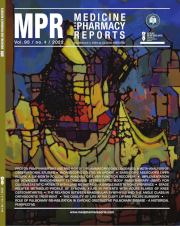Trigeminal Zoster with drug-induced labial angioedema leading to necrosis
DOI:
https://doi.org/10.15386/mpr-2103Keywords:
Zoster, varicella, angioedema, oxcarbazepine, adverse drug reactionAbstract
Introduction. Zoster is caused by the reactivation of a dormant viral infection, and is characterized by painful, vesicular lesions along a dermatome. Neuritic pain associated with zoster can be treated with anticonvulsant medications.
Case Report. An immunocompetent adult physician developed prominent zoster lesions in the trigeminal nerve distribution. Treatment included antiviral therapy for the acute infection, and pharmacotherapy for neuritic pain. Pharmacotherapy included several anticonvulsant agents, with labial angioedema developing after initiation of oxcarbazepine.
Discussion. The case is notable for the pictorial timeline of lesion development, as well as the marked incident angioedema following initiation of treatment for neuritis with oxcarbazepine.
Conclusions. Clinicians should remain vigilant for drug-induced facial angioedema when treating patients with trigeminal zoster-related neuritis due to the potential for angioedema to aggravate a lesion, resulting in scarring. Angioedema of the head and neck should be closely monitored due to the potential for airway compromise.
Downloads
Published
How to Cite
Issue
Section
License
The authors are required to transfer the copyright of the published paper to the journal. This is done by agreeing to sign the Copyright Assignment Form. Whenever the case, authors are also required to send permissions to reproduce material (such as illustrations) from the copyright holder.

The papers published in the journal are licensed under a Creative Commons Attribution-NonCommercial-NoDerivatives 4.0 International License.

